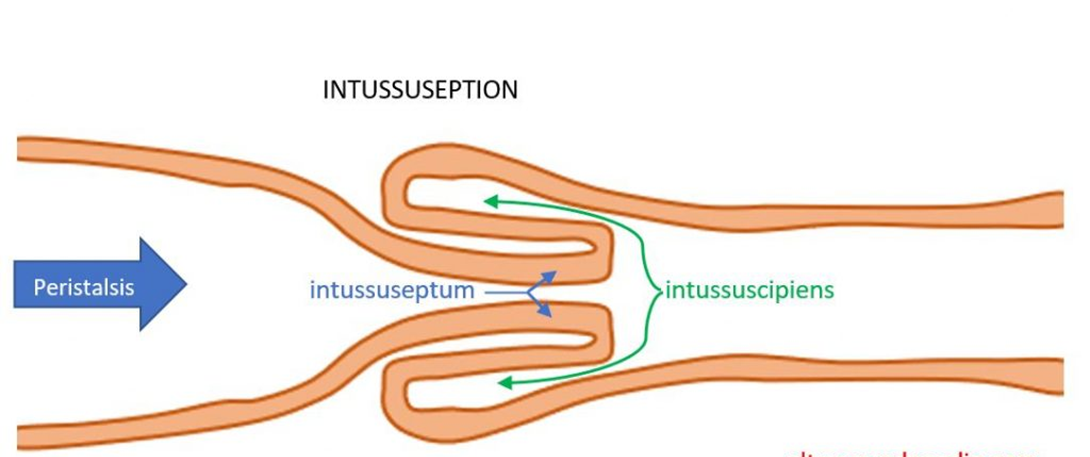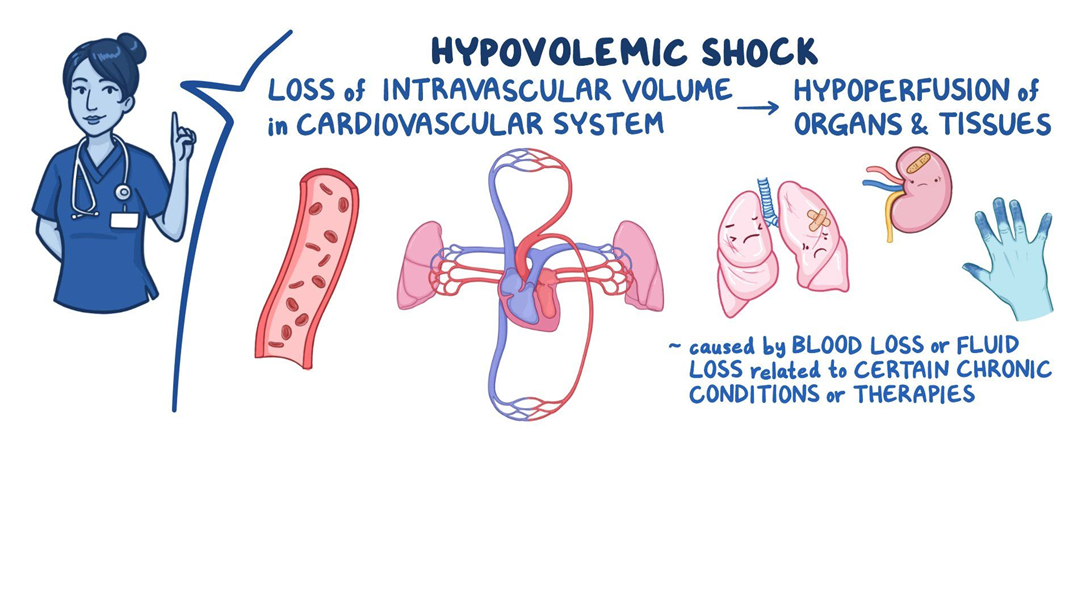A nurse is caring for a male infant who has a palpable mass in the upper right quadrant and stools mixed with blood and mucus. The nurse should recognize that which of the following diagnoses is associated with these findings?
Hypertrophic pyloric stenosis
Intussusception
Inguinal hernia
Tracheoesophageal fistula
The Correct Answer is B
Choice A reason: Hypertrophic pyloric stenosis is a condition in which the pyloric sphincter becomes thickened and obstructs the passage of food from the stomach to the duodenum. It causes projectile vomiting, dehydration, and weight loss, but not a palpable mass or bloody stools.
Choice B reason: Intussusception is a condition in which a segment of the intestine telescopes into another segment, causing obstruction, inflammation, and ischemia. It causes a palpable mass in the upper right quadrant, abdominal pain, and stools mixed with blood and mucus, also known as "currant jelly" stools.
Choice C reason: Inguinal hernia is a condition in which a part of the intestine protrudes through a weak spot in the abdominal wall near the inguinal canal. It causes a bulge in the groin area, especially when the infant cries or strains. It does not cause a mass in the upper right quadrant or bloody stools.
Choice D reason: Tracheoesophageal fistula is a congenital anomaly in which there is an abnormal connection between the trachea and the esophagus. It causes excessive drooling, choking, coughing, and cyanosis during feeding, but not a palpable mass or bloody stools.

Nursing Test Bank
Naxlex Comprehensive Predictor Exams
Related Questions
Correct Answer is B
Explanation
Choice A reason: This statement is incorrect, as reports of thirst are not a manifestation of hemorrhage following a tonsillectomy. Thirst may be caused by dehydration, dry mouth, or fever, which are common after surgery.
Choice B reason: This statement is correct, as frequent swallowing is a manifestation of hemorrhage following a tonsillectomy. Swallowing may indicate that the child is bleeding from the surgical site and trying to clear the blood from the throat. The nurse should inspect the child's mouth and throat for signs of bleeding and notify the provider.
Choice C reason: This statement is incorrect, as mouth breathing is not a manifestation of hemorrhage following a tonsillectomy. Mouth breathing may be due to nasal congestion, pain, or swelling, which are expected after surgery.
Choice D reason: This statement is incorrect, as reports of pain are not a manifestation of hemorrhage following a tonsillectomy. Pain is a normal and expected outcome after surgery and should be managed with analgesics and comfort measures.
Correct Answer is A
Explanation
Choice A reason: The child has signs of dehydration and hypovolemic shock, such as vomiting, melena, abdominal pain, and weak pedal pulses. Dehydration is a loss of fluid and electrolytes from the body, which can result from gastroenteritis. Hypovolemic shock is a life-threatening condition that occurs when the blood volume is too low to maintain adequate perfusion and oxygen delivery to the vital organs.
Choice B reason: The child does not have signs of peritonitis and septic shock, such as fever, chills, rigors, tachycardia, hypotension, and abdominal rigidity. Peritonitis is an inflammation of the peritoneum, the membrane that lines the abdominal cavity and organs. Septic shock is a severe infection that causes systemic inflammatory response syndrome and organ dysfunction.
Choice C reason: The child does not have signs of pancreatitis and cardiogenic shock, such as elevated serum amylase and lipase, jaundice, dyspnea, crackles, and chest pain. Pancreatitis is an inflammation of the pancreas, an organ that produces digestive enzymes and hormones. Cardiogenic shock is a failure of the heart to pump enough blood to meet the body's needs.
Choice D reason: The child does not have signs of peptic ulcer and anaphylactic shock, such as hematemesis, dyspepsia, urticaria, angioedema, and wheezes. Peptic ulcer is a sore in the lining of the stomach or duodenum, caused by factors such as Helicobacter pylori infection, NSAIDs, or stress. Anaphylactic shock is a severe allergic reaction that causes bronchoconstriction, vasodilation, and hypotension.

Whether you are a student looking to ace your exams or a practicing nurse seeking to enhance your expertise , our nursing education contents will empower you with the confidence and competence to make a difference in the lives of patients and become a respected leader in the healthcare field.
Visit Naxlex, invest in your future and unlock endless possibilities with our unparalleled nursing education contents today
Report Wrong Answer on the Current Question
Do you disagree with the answer? If yes, what is your expected answer? Explain.
Kindly be descriptive with the issue you are facing.
